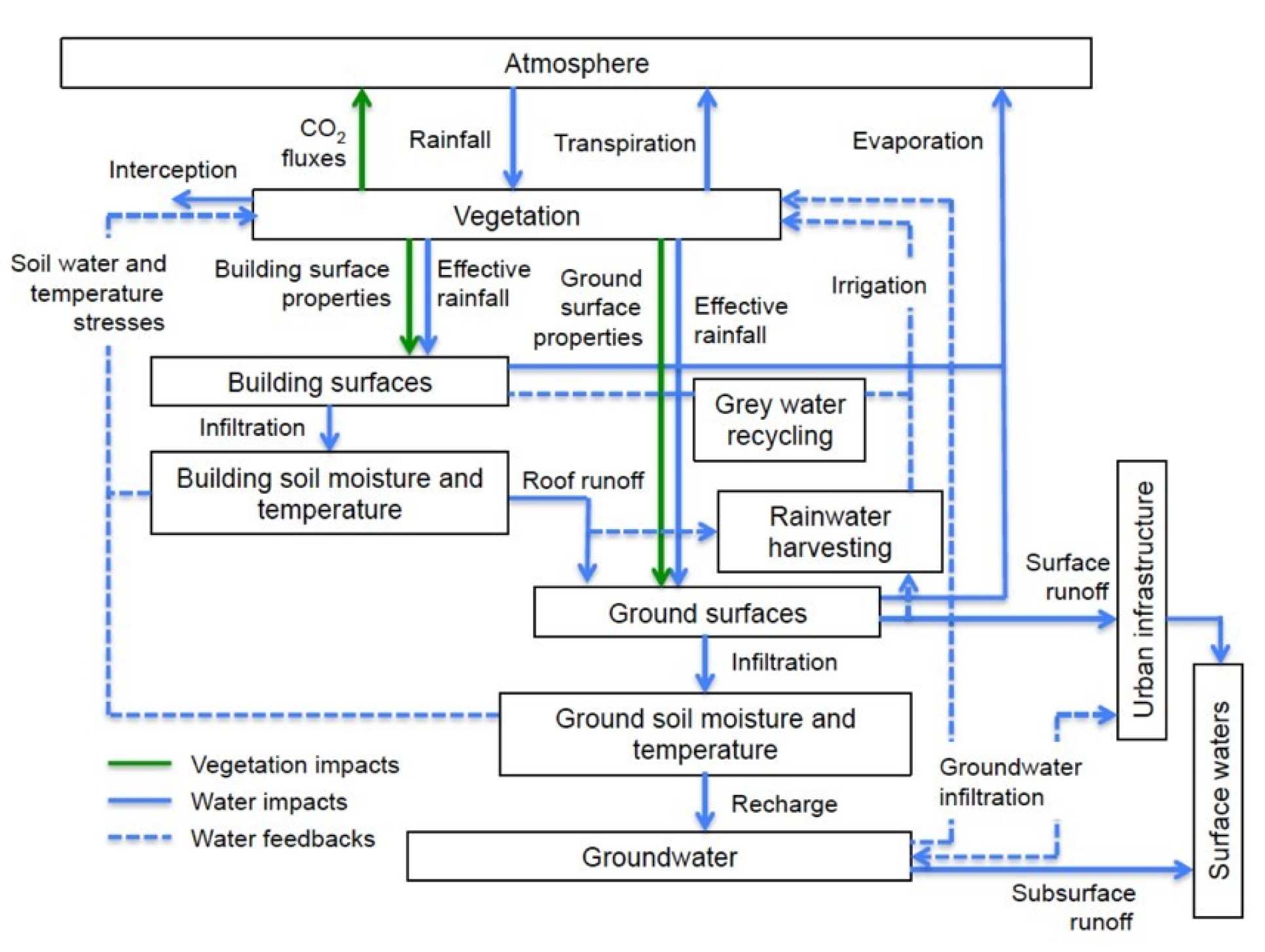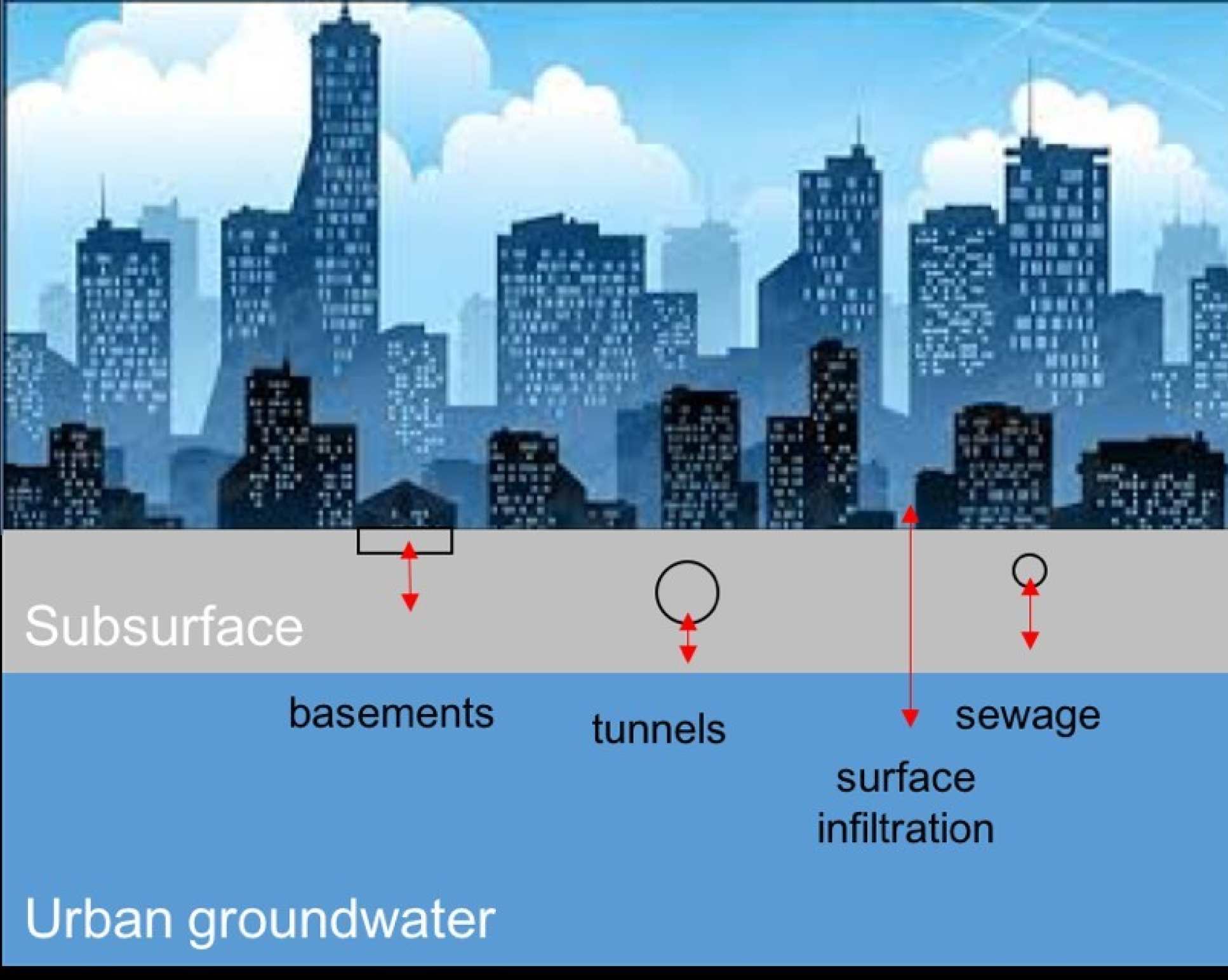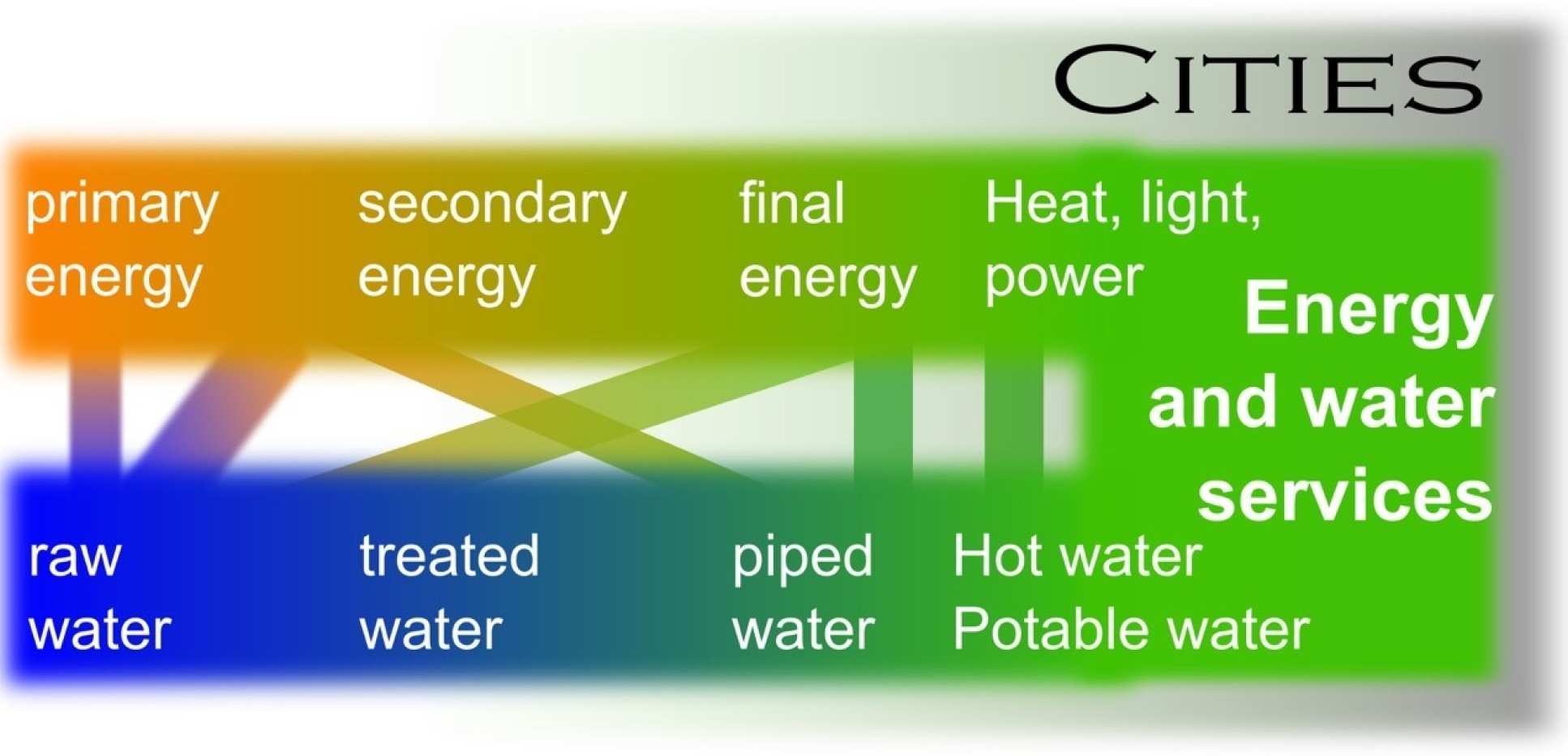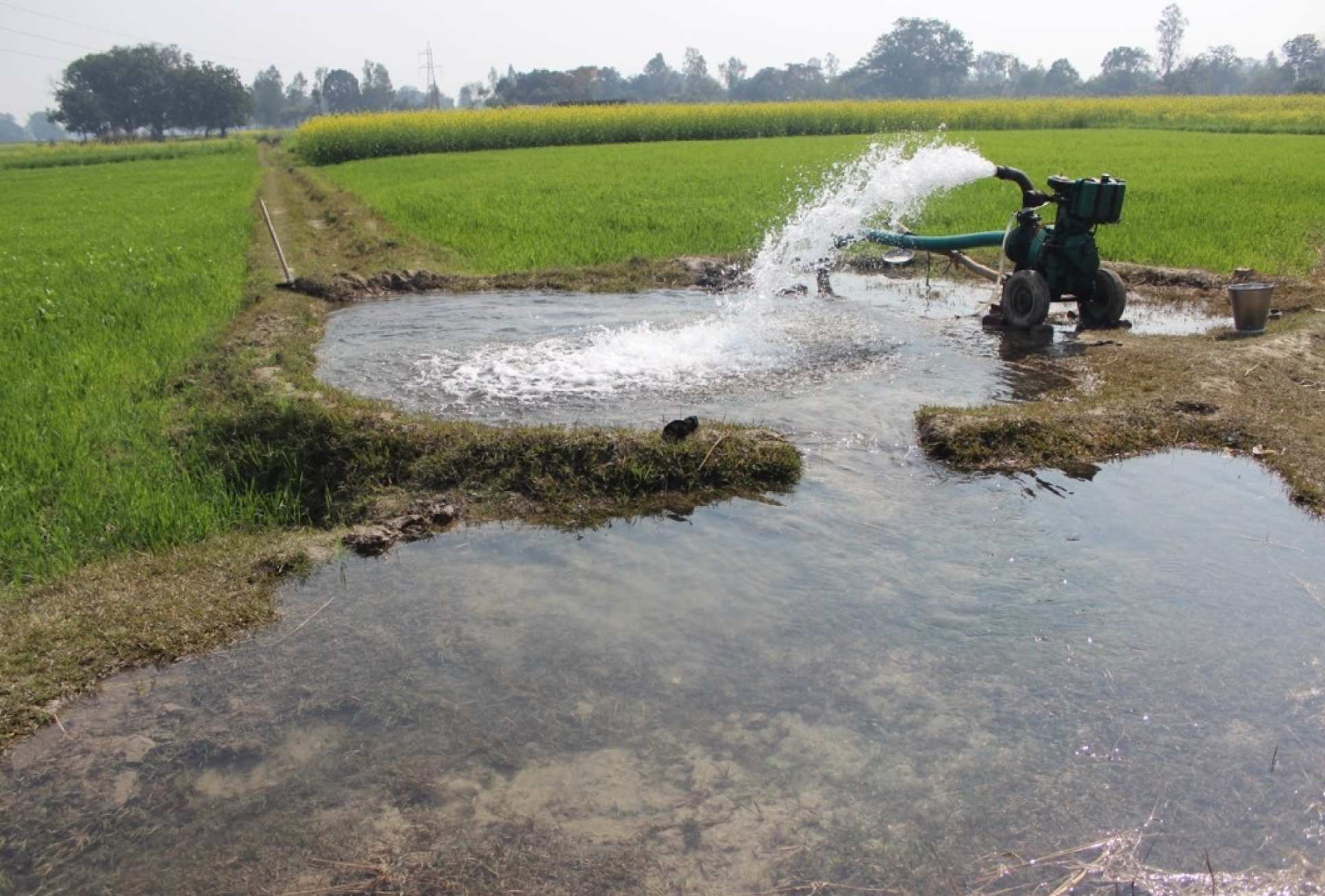Urban water
Urban water
Sustainable urban water management
Principal researchers: Dr Ana Mijic and Prof Cedo Maksimovic
Climate change is now the dominant threat to cities, with the increased likelihood of extreme weather events posing a grave risk to human life and urban infrastructure. Building urban climate change resilience is thus imperative, and Urban Water Management (UWM) is a crucial element of achieving climate resilient cities. Traditionally, UWM involved providing water services to a growing population and coping with extreme climatic variations. In recent decades, however, there have been three major shifts in UWM towards: (i) a more “natural” water cycle; (ii) improving water security through decentralised sourcing; and (iii) achieving resources efficiency.
In light of these issues, the Blue Green Dream (BGD), multi-partner, Imperial College London led project has worked to harness the ecosystem services provided by vegetation – in particular, Blue-Green (BG) infrastructure (swales, green roof, rain gardens etc.) – to enhance urban resilience. The multiple benefits of the implementation of BG solutions include: reduced pressure on water resources, enhanced urban resilience to drought and floods, reduced water, air and noise pollution, mitigation of urban heat island effect, reduced energy requirements (for heating and cooling of buildings), and sustainable urban food production.
In order to maximise BG infrastructure’s capacity for enhancing urban climate change resilience, this work is focused on:
- Understanding the linkages between all urban water cycle elements within ‘the critical’ urban zone.
- Quantifying the urban water and energy feedbacks between the subsurface, surface, vegetation and atmosphere.

Selected publications:
Ossa-Moreno, J., Smith, K.M. and Mijic, A. (2016) Economic analysis of wider benefits to facilitate SuDS uptake in London, UK, Sustainable Cities and Society, in press.
Pina, R.D., Ochoa-Rodriguez, S., Simões, N.E., Mijic, A., Marques, S.A. and Maksimović, Č (2016) Semi- vs. Fully-Distributed Urban Stormwater Models: Model Set Up and Comparison with Two Real Case Studies, Water, 8(2), 58.
Paterson, W., Rushforth, R., Ruddell, B.L., Konar, M., Ahams, I.C., Gironás, J., Mijic, A. and Mejia, A. (2015) Water Footprint of Cities: A Review and Suggestions for Future Research. Sustainability, 7(7), 8461-8490.
Urban groundwater
Principal researchers: Dr Ana Mijic and Dr Adrian Butler
Cities that are either groundwater-dependent (i.e. predominantly rely on aquifers for water supply) or groundwater-vulnerable urban environments will have a growing need for groundwater considerations to be integrated into Sustainable Urban Water Management (SUWM) approaches. Intensive urbanisation will mean many cities will be increasingly dependent on urban groundwater as a potentially sustainable source of water.
The modification of groundwater recharge patterns and aquifer depletion or, at the other extreme, increase in groundwater levels leading to groundwater flooding and infrastructure damage already have significant economic and environmental impacts. It is estimated that these issues cost the water industry millions of pounds every year. In addition to flooding impacts, urban groundwater is exposed to large subsurface contamination due to sewage seepage and, to a certain extent, the recharge from urban green spaces and brownfield sites. Careful planning is therefore required to manage competing and sustainable use of the groundwater resource, and to ensure SUWM is integrated with other urban development priorities, such as supporting open green spaces.
The work aims to:
- Support integrated decision-making by providing the tools and approaches required to better understand and manage the interactions between the climate, groundwater and urban infrastructure.
- Work with relevant stakeholders to enhance urban groundwater resilience through better operational management of existing infrastructure, integrated planning of new infrastructure and development, and by underpinning long-term strategy and policy.
This work is part of the Centre for Research and Innovation on Groundwater Infiltration into Urban Infrastructure, jointly coordinated by Imperial College, British Geological Survey, University of Birmingham and Atkins (http://gwinfiltration.co.uk/).

Selected publications:
Mansour MM, Mijic A, et al. (2016). Assessing the risk of groundwater-induced sewer flooding to inform water and sewerage company investment planning. British Geological Survey Report, CR/16/154.
Water-food-energy nexus
Principal researcher: Dr Ana Mijic
Future food, water and energy security are interlinked via land use and demand management. The increasing demand for available resources (land and water) and inter-sectorial competition will determine the future water use. However, our understanding of energy-water-food interactions is in a very preliminary stage and requires more interdisciplinary research. The climate change and climate mitigation policies will further complicate the nexus.
Large cities are growing all over the world, with increasing demands for water and energy, while at the same time environmental constraints on both are encroaching. Supply expansions for energy and water require water and energy, respectively. These linkages have to be properly taken into account to avoid solutions that backfire in other areas, and find the ones that solve urban resource problems comprehensively.
Research questions include:
- How can infrastructure planning incorporate the various linkages between water and energy supply and end-use?
- Are the planning methods used and policies in place compatible with each other and with future growth, for large developed (e.g. London) and developing (e.g. Mumbai) cities?
This work is part of the International Association for Hydrological Sciences Panta Rhei programme via working group led by Dr Mijic on Energy and Food Impacts on Water (http://iahs.info/uploads/Panta%20Rhei/Working%20Groups/wg3.pdf

Selected publications:
De Stercke, S, Mijic, A and Keirstead, J. (2016) A Review of Urban Water-energy Linkages in End-use: A Call for Joint Demand Studies, British Journal of Environment and Climate Change, ISSN: 2231-4784, Vol.: 6, Issue.: 3 (July-September)-Special Issue (Part 2)
De Stercke, S., Mijic, A. and Buytaert, W. (2016) The Role of End-Use in Integrated Urban Energy and Water System Dynamics. In EGU General Assembly Conference Abstracts (Vol. 18, p. 8382).
McMillan, H., Montanari, A., Cudennec, C., Savenjie, H., Kreibich, H., Krüger, T., Liu, J., Meija, A., van Loon, A., Aksoy, H/., Di Baldassarre, G., Huang, Y., Mazvimavi, D., Rogger, M., Bellie, S., Bibikova, T., Castellarin, A., Chen, Y., Finger, D., Gelfan, A., Hannah, D., Hoekstra, A., Li, H., Maskey, S., Mathevet, T., Mijic, A., Acuñaz, A.P., Polo, M.J., Rosales, V., Smith, P., Viglione, A., Srinivasan, V., Toth, E., van Nooyen, T.R. and Xia, J. (2016) Panta Rhei 2013-2015: Global perspectives on hydrology, society and change, Hydrological Sciences Journal, doi:10.1080/02626667.2016.1159308.
Water management in developing countries
Principal researchers: Dr Ana Mijic and Dr Wouter Buytaert
A water secure world, defined in the context of contemporary water management, is a world where sustainable development is achieved by adopting an integrated systems perspective to water resources use and protection, which accounts explicitly for trade-offs between human and environmental needs. This leads to intricate links between two systems – human and natural – through the process of water management that defines the dynamics of the component interactions and feedbacks. Many factors that lie outside the water realm, such as those from social, institutional and economic domains, impact water allocation. Finally, to establish credibility of the science among decision makers, consideration of the uncertainties resulting from all factors, and their impacts on future alternatives is required.
Managing water resources in the Indo-Gangetic Plain (IGP) is a tremendous challenge because of the basin’s uniqueness in scale, biophysical complexity and the dynamics of its institutional and socio-economic characteristics. Given this complexity, a systems approach is needed to identify and quantify the dominant interactions and feedbacks between human activities and the hydro-meteorological system of the basin.
This work aims to:
- Improve regional assessment of the interactions and feedbacks in the coupled human-natural modelling system of the Indo-Gangetic Plain.
- Provide information for improved decision-making on water allocation.

Selected publications:
O’Keeffe, J., Buytaert, W., Mijic, A., Brozović, N and Sinha, R. (2016) The use of semi-structured interviews for the characterisation of farmer irrigation practices, Hydrology and Earth System Sciences, 20, 1911–1924.
Tsarouchi, G.M., Buytaert, W. and Mijic, A. (2014) Coupling a land surface model with a crop growth model to improve ET flux estimations in the Upper Ganges basin, India. Hydrology and Earth System Sciences, 18, 4223-423.
Rainfall for urban water management and flood forecasting
Principal Investigator: Christian Onof
Research is being carried out with the following aims:
- To examine the benefits of new types of radar measurement of rainfall (X-band radar, new satellite products).
- To look at how different types of measurement can be optimally combined to provide best estimates of rainfall
on a grid. Typically, the issue is the merging of raingauge point information with spatial information from a radar. But satellite active and passive sensors and disdrometers provide additional sources that yield valuable information about non-gauged regions and very fine scales respectively.
- The separation between consecutive radar measurements leaves much of the progression of typical rainfall events unmeasured.
We have shown that this can have a major impact upon our ability to estimate flows in the urban drainage network, more so than the spatial resolution of the radar which was traditionally taken to be the limiting factor. To remedy this situation, methods are being developed to interpolate between consecutive radar scans using optical flow and cell tracking techniques.
- This interpolation technique can be extended to define a nowcasting method which provides estimates of rainfall fields in the near future (a couple of hours at the most). Nowcasting does not involve the use of physically based weather forecasting models, but can usefully be combined with such physical approaches.
Some recent relevant publications:
Leitao, J.P., Simões, N.E., Pina, R.D., Ochoa-Rodriguez, S., Onof, C., Marques, A.S. (2016) Stochastic evaluation of the impact of sewer inlets’ hydraulic capacity on urban pluvial flooding, Stochastic Environmental Research and Risk Assessment, 1-16
Wang, L.-P., Ochoa-Rodriguez, S., Pina, R.D., Pessemier, M., Kroll, S., Van Assel, J., Willems, P., Onof, C. (2015) Enhancement of radar rainfall estimates for urban hydrology through optical flow temporal interpolation and Bayesian gauge-based adjustment, Journal of Hydrology, 531, 408-426,doi:10.1016/j.jhydrol.2015.05.049
Ochoa-Rodriguez, S., Wang, L.-P., Gires, A., Pina, R.D., Reinoso-Rondinel, R., Bruni, G., Ichiba, A., Gaitan, S., Cristiano, E., Van Assel, J., Krolle, S., Murlà-Tuyls, D., Schertzer, D., Tchiguirinskaia, I., Onof, C., Willems, P., and Ten Veldhuis, J.A.E. (2015) Impact of spatial and temporal resolution of rainfall inputs on semi-distributed urban drainage modelling outputs: A multi-catchment investigation, Journal of Hydrology, 531, 389-407,doi:10.1016/j.jhydrol.2015.05.035
Wang, L.-P., Ochoa-Rodriguez, S., Onof, C., and Willems, P., (2015) Singularity-sensitive gauge-based radar rainfall adjustment methods for urban hydrological applications, Hydrology and Earth System Science, 19, 4001-4021, doi:10.5194/hessd-12-1855-2015.
SIMÕES, N.E., Ochoa-Rodriguez, S., Wang, L.-P. PINA, R.D., MARQUES, A.S., ONOF, C., LEITÃO, J.P. (2015) Stochastic Urban Pluvial Flood Hazard Maps based upon a Spatial-Temporal Rainfall Generator, Water, 7, 3396-3406; doi:10.3390/w7073396
Nerini, D., Zulkafli, Z., Wang, L.-P. Onof, C., Buytaert, W., Lavado, W., Guyot, J.-L. (2015) A comparative analysis of TRMM-rain gauge data merging techniques at the daily time scale for distributed rainfall-runoff modelling applications, Journal of Hydrometeorology, 16, 2153-2168
Zulfaki, Z., Buytaert, W., Onof, C., Mainz, B., Tarnavsky, E., Lavado, W., Guyot, J.L. (2014) A comparative performance analysis of TRMM 3B42 (TMPA) 2 versions 6 and 7 for hydrological applications over 3 Andean-Amazon river basins, Journal of Hydrometeorology, 15(2):581-592
Wang, L.-P., Ochoa-Rodriguez, S., SIMOES, N.E., Onof, C., Maksimovic, C. (2013) Raingauge data combination techniques: a revision and analysis of their suitability for urban hydrology, Water Science and Technology, 68(4), 737-47
McRobie, F., Wang, L.-P. Onof, C., Kenney, S. (2013) A spatial-temporal rainfall generator for urban drainage design, Water Science and Technology, 68(1), 240-9
Water supply systems monitoring and operational management
Principal researcher: Dr Ivan Stoianov
Experimental and analytical research in hydraulics, hydroinformatics and real-time monitoring and operational management of urban water systems.
The technology transfer of this research is facilitated via the development of purpose built embedded hardware and software systems for distributed sensing, communication and event stream processing.
The research enables the water industry to monitor, model and control the dynamic hydraulic conditions and the kinetics of the water quality processes in their large scale transmission and distribution networks with unique spatial and temporal resolution.


